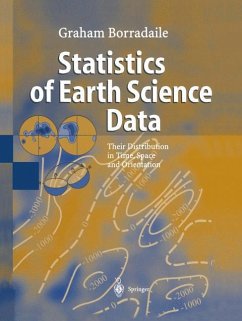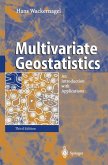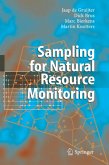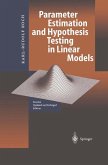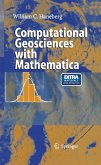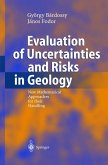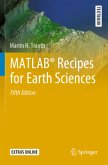The Goals of Data Collection and Its Statistical Treatment in the Earth Sciences The earth sciences are characterised by loose and complex relationships between variables, and the necessity to understand the geographical dis tribution of observations as well as their frequency distribution. Our fre quency distributions and the looseness of relationships reflect the com plexity and intrinsic natural variation in nature, more than measurement error. Furthermore, earth scientists cannot design experiments according to statistical recommendation because the availability and complexity of data are beyond our control. Usually, the system we are studying cannot be isolated into discrete independent variables. These factors influence the first steps of research, how and where to collect specimens or observations. Some issues are particularly troublesome and common in earth science, but are rarely handled in an undergraduate statistics course. These include spatial-sampling methods, orientation data, regionalised variables, time se ries, identification of cyclicity and pattern, discrimination, multivariate systems, lurking variables and constant-sum data. It is remarkable that most earth-science students confront these issues without formal training or focused consideration.
From the reviews:
"All in all, Graham Borradaile has written and interesting and idiosyncratic book on statistics for geoscientists that will be welcome among students, researchers, and practitioners dealing with orientation data. That should include engineering geologists who work with things like rock fracture orientation measurements or clast alignment in paleoseismic trenches. It wonâEUR(TM)t replace the collection of statistics and geostatistics texts in my library, but it will have a place among them and will likely be one of several references to which I turn when working with orientation data.... The text is easy to follow and illustrations are generally clear and easy to read..."(William C. Haneberg, Haneberg Geoscience)
"This monograph is an introductory course in statistically processed data types in earth sciences, where large sample contemporary methods of data gathering are required. ... The book is intended for higher course students and aspirants in all earth sciences. It will be helpful for professional researchers in data processing in electronic tables. In contrast to usual textbooks on statistics, this book includes material on sample formation, time series and oriented data up to three dimensions, and is illustrated by substantive examples." (Sultan G. Valeev, Zentralblatt MATH, Vol. 1041 (16), 2004)
"The statistical analysis of geological data requires, more often than not, techniques that are only covered by advanced courses in statistics. ... G. Borradaile recognises this, and uses it as the starting point for his book ... . he succeeds in demonstrating how treatment of Earth Science data can be greatly enhanced and quantified without great pain. ... Statistics of Earth Science Data is a very convenient and complete introduction in statistics, with an approach that will be appreciated by geologists and other Earth scientists." (Kris Piessens, Geologica Belgica, Issue 7, 2004)
"All in all, Graham Borradaile has written and interesting and idiosyncratic book on statistics for geoscientists that will be welcome among students, researchers, and practitioners dealing with orientation data. That should include engineering geologists who work with things like rock fracture orientation measurements or clast alignment in paleoseismic trenches. It wonâEUR(TM)t replace the collection of statistics and geostatistics texts in my library, but it will have a place among them and will likely be one of several references to which I turn when working with orientation data.... The text is easy to follow and illustrations are generally clear and easy to read..."(William C. Haneberg, Haneberg Geoscience)
"This monograph is an introductory course in statistically processed data types in earth sciences, where large sample contemporary methods of data gathering are required. ... The book is intended for higher course students and aspirants in all earth sciences. It will be helpful for professional researchers in data processing in electronic tables. In contrast to usual textbooks on statistics, this book includes material on sample formation, time series and oriented data up to three dimensions, and is illustrated by substantive examples." (Sultan G. Valeev, Zentralblatt MATH, Vol. 1041 (16), 2004)
"The statistical analysis of geological data requires, more often than not, techniques that are only covered by advanced courses in statistics. ... G. Borradaile recognises this, and uses it as the starting point for his book ... . he succeeds in demonstrating how treatment of Earth Science data can be greatly enhanced and quantified without great pain. ... Statistics of Earth Science Data is a very convenient and complete introduction in statistics, with an approach that will be appreciated by geologists and other Earth scientists." (Kris Piessens, Geologica Belgica, Issue 7, 2004)
"All in all, Graham Borradaile has written and interesting and idiosyncratic book on statistics for geoscientists that will be welcome among students, researchers, and practitioners dealing with orientation data. That should include engineering geologists who work with things like rock fracture orientation measurements or clast alignment in paleoseismic trenches. It won’t replace the collection of statistics and geostatistics texts in my library, but it will have a place among them and will likely be one of several references to which I turn when working with orientation data.... The text is easy to follow and illustrations are generally clear and easy to read..."(William C. Haneberg, Haneberg Geoscience)
"This monograph is an introductory course in statistically processed data types in earth sciences, where large sample contemporary methods of data gathering are required. ... The book is intended for higher course students and aspirants in all earth sciences. It will be helpful for professional researchers in data processing in electronic tables. In contrast to usual textbooks on statistics, this book includes material on sample formation, time series and oriented data up to three dimensions, and is illustrated by substantive examples." (Sultan G. Valeev, Zentralblatt MATH, Vol. 1041 (16), 2004)
"The statistical analysis of geological data requires, more often than not, techniques that are only covered by advanced courses in statistics. ... G. Borradaile recognises this, and uses it as the starting point for his book ... . he succeeds in demonstrating how treatment of Earth Science data can be greatly enhanced and quantified without great pain. ... Statistics of Earth Science Data is a very convenient and complete introduction in statistics, with an approach that will be appreciated by geologists and other Earth scientists." (Kris Piessens, Geologica Belgica, Issue 7, 2004)
"This monograph is an introductory course in statistically processed data types in earth sciences, where large sample contemporary methods of data gathering are required. ... The book is intended for higher course students and aspirants in all earth sciences. It will be helpful for professional researchers in data processing in electronic tables. In contrast to usual textbooks on statistics, this book includes material on sample formation, time series and oriented data up to three dimensions, and is illustrated by substantive examples." (Sultan G. Valeev, Zentralblatt MATH, Vol. 1041 (16), 2004)
"The statistical analysis of geological data requires, more often than not, techniques that are only covered by advanced courses in statistics. ... G. Borradaile recognises this, and uses it as the starting point for his book ... . he succeeds in demonstrating how treatment of Earth Science data can be greatly enhanced and quantified without great pain. ... Statistics of Earth Science Data is a very convenient and complete introduction in statistics, with an approach that will be appreciated by geologists and other Earth scientists." (Kris Piessens, Geologica Belgica, Issue 7, 2004)

